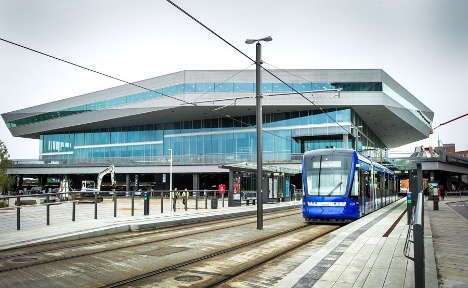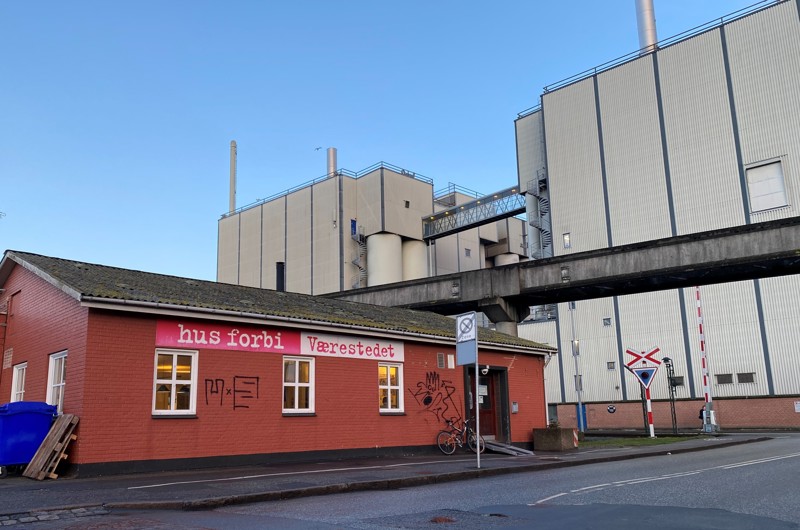For my blogging adventure, I chose to explore the Dokk1 Public Library in Aarhus, Denmark in further detail. While I have heard several things about this library from Dr. Stephens and several others, I have mostly heard about the fascinating architecture, specifically the world’s largest tubular bell that rings every time a baby is born in the community (Zorthian, 2016).

The architecture, which is built around community engagement and accessibility, is incredible and helped them deserve best public library in the world in 2016 (Ro, 2016). When doing further research, what really caught my attention was their involvement with engaging the community in togetherness through conversation with the public and including everyone that they can. Because of their central location and access to public parking and transit, the library is a great meeting spot that really “fosters togetherness” and brings different groups together (Lapointe, 2022).

(SOURCE: https://www.lodige.com/en-us/products/car-park-solutions/references/dokk1-aarhus/)
One way they empower locals in their community to use the library and feel welcome is through their involvement with Værestedet, which is a local safe space for those dealing with substance abuse issues, homelessness, mental illness, or other social challenges. They have gotten heavily involved with this community by listening to their ideas and creating activities for the library with them. By working together, they were able to create several solutions to help these community members feel welcome and “seen” – including more present social librarians, a bookcase and cozy reading corner made just for them, and creative writing workshops and public conversations about issues that people in this community face – which they have titled “Tales from the Street” (Ashley, 2022).

Dokk1 is hoping that by doing this they are helping bridge the gap between these patrons who have felt socially marginalized and the rest of the community – and in turn inspiring the rest of Europe, and hopefully the rest of the world, to do the same. For Dokk1, every citizen counts and is a key factor in their values, and it is a place that is a “flexible and dynamic sanctuary for everyone in search of knowledge, inspiration, and personal development” (Librarybuildings.info, 2022).
Their library has inspired me to remember to involve and listen to all local community members, every age and every group, at whatever library I end up at. I want anyone who comes to my library to feel welcome and empowered when they walk in, and to know that they have a say in the design and services. Just like Dokk1 Library, I hope my library is like the “living room” of my community, or like a second home to anyone walking in (Morehart, 2016).
References:
Ashley. (2022, March 8). Inclusive Democratic libraries. European Cultural Foundation. https://culturalfoundation.eu/stories/inclusive-democratic-libraries/
Lapointe, M. (2022, August 31). Spotlighting the dokk1 library: Princh library blog. Princh. https://princh.com/blog-spotlighting-dokk1-library/
Librarybuildings.info. (2022). DOKK1. https://librarybuildings.info/denmark/dokk1
Morehart, P. (2016, August 29). Moving beyond the “third place.” American Libraries Magazine. https://americanlibrariesmagazine.org/blogs/the-scoop/library-design-moving-beyond-third-place/
Ro, L. (2016, August 17). Scandinavia’s largest library wins title of Public Library of the Year. Curbed. https://archive.curbed.com/2016/8/17/12522536/dokk1-ifla-public-library-of-the-year-schmidt-hammer-lassen
Zorthian, J., & Time. (2017, June 20). Look inside the most cutting-edge public library in the world. Fortune. https://fortune.com/2016/08/20/dokk1-aarhaus-public-library/
@inabookbind So appreciate your explorations of Dokk1. The staff was so amazing and welcoming when I was there for Next Library in 2017 and 2019. I hope to get back sometime soon!
@michael Dokk1 / Aarhus are now on my list of places I must visit! It seems like a dream for a librarian.
@inabookbind I agree! Oodi in Helsinki would be a good choice too.
@inabookbind Thank you for this closer look at Dokk1. It’s high on my library tourism list! I didn’t know about their partnership with Værestedet, the “drop-in centre”. The video also has a great translation lesson: that “være” means “to be” in Danish! Both the library and the drop-in centre are places where you can just be. A good lesson in library partnerships!
Hi Millicent,
I love your post on Denmark’s Dokk1 Public Library. You’ve presented a really nice introduction into their extraordinary public services. I especially love the tubular bell ringing for every new birth, which serves as a beautiful daily reminder that we are truly a part of a much bigger whole.
Also, their Værestedet program is the epitome of libraries serving the entire community. Their unwavering devotion serves as an excellent example that libraries, too, should engage in social work. For me, it reinforces the idea that libraries have the potential to be transformative spaces, not only for knowledge but for serving and uplifting the people who need it the most.
@inabookbind
Great post! I really enjoyed the video on the partnership between Dokk1 and Værestedet. I think forming these kinds of partnerships with like-minded institutions and services in the surrounding community is really great way for libraries to remain relevant in the community as a whole. I especially loved the bit in the video when Asmund Bertleson from Dokk1 stresses a desire to bring the community served by Værestedet into their cultural programming. When we discuss communities who are underserved or at risk we typically and understandably focus on meeting their basic needs. But their cultural and social needs are just as important.